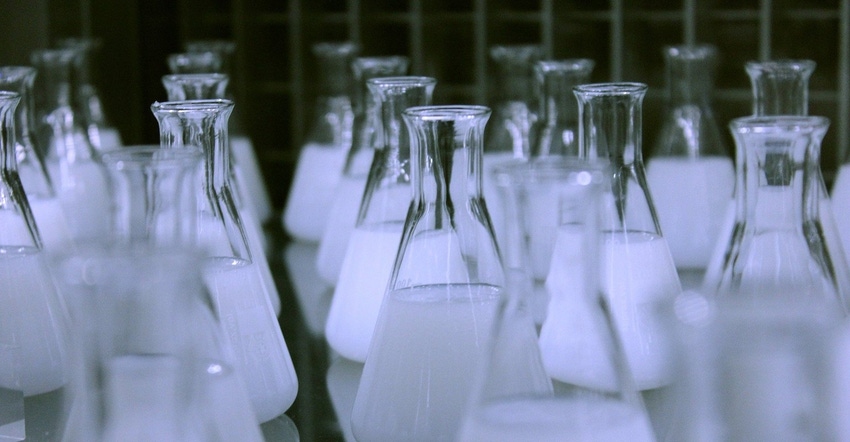Powder & Bulk Solids presents industry perspectives on how chemical manufacturers will fare in the coming year.

Since the start of the COVID-19 pandemic, chemical manufacturers around the world have faced an ever-evolving series of challenges, including plant shutdowns and restrictions on movement, shipping and trucking delays, shortages of raw materials, and more.
Chemical companies have adjusted to many of these challenges. Production and spending increased across the global chemical industry in 2021, but much uncertainty lies ahead.
Powder & Bulk Solids surveyed available forecasts and perspectives on the industry to provide a view of what issues chemical producers might face over the coming year.
US Chemical Production to Accelerate
Chemical production, excluding pharmaceuticals, is expected to slow down somewhat across most of the globe next year, but German chemical industry organization Verband der Chemischen Industrie e.V. (VCI) forecasts that the United States will see the biggest production gains across all major chemical manufacturing markets in 2022.
Overall, the organization predicts that chemical production will grow by 2.7% worldwide next year, a notable drop from an estimated 7% rebound jump in 2021. While production in China is projected to climb by 10% this year, VCI foresees that figure will dip to 4% in 2022. The US, on the other hand, is expected to witness 5% growth in chemical production next year, up from 2% in 2021. No other major chemical manufacturing market – including India, the EU, South Korea, and Japan – is expected to increase its production growth percentage next year.
Trade organization American Chemistry Council (ACC) forecasted this summer that US chemical volumes will rise by 3.2% in 2022 compared to an estimated increase of 1.4% this year.
Expect Supply Chain Issues to Persist
GDP is expected to grow robustly across all major industrial markets in 2022, and efforts are underway to alleviate workforce issues in the shipping and trucking industries and congestion at ports across the world – like the Biden White House’s current push to solve bottlenecks at the Ports of Los Angeles and Long Beach in California – but it is uncertain how successful these initiatives will be.
ACC Chief Economist Kevin Swift remarked this month: “We expect recovery to proceed apace despite multiple risks and uncertainties. These include supply chain constraints and increased demand as economies reopen; trade tensions; weather events, cybersecurity and similar shocks; inflation; financial volatility, and public and private sector debt.”
The International Monetary Fund (IMF) lowered its forecast for global economic growth by a tenth of a percentage point in its most reecnt World Economic Outlook report, citing supply chain pressures, rising inflation and other concerns.
"With the Delta variant slowing the reopening of economies around the world, there remains significant pent-up demand globally, particularly across our industrial and consumer end markets. Many industries continue to see elevated order backlogs, coupled with low inventory levels, as supply chain struggled to keep up with robust demand," Dow Inc. President and CFO Howard I. Ungerleider said in an October 21 call with investors. "These supply chain disruptions are expected to persist, which will certainly prolong the ability to restock inventories across most value chains."
American Farmers May Face Shortages of Ag Chemicals
Perdue University issued a report in October warning US farmers that supply chain turbulence and shortages of materials may result in a shortage of agricultural chemicals like glyphosate (Roundup) and glufosinate (Liberty) during the 2022 growing season.
“Flooding, COVID-19 outbreaks, and congested ports disrupted production and exports in China for months, resulting in chemical manufacturers rationing supply,” Allan W. Gray, executive director of the Perdue University Center for Food and Agricultural Business said in an announcement. “Plan your upcoming weed control strategies to accommodate for limited availability because of supply or price of these two active ingredients.
The university’s report noted that even if there are no shortages of supply, agricultural producers will probably see higher prices for herbicides next year.
US Chemical Industry Capital Spending to Modestly Increase
Capital spending is projected to top $30 billion in the US chemical industry this year, representing an 11.6% increase, according to the ACC’s Mid-Year 2021 Chemical Industry Situation and Outlook report. The organization expects capital spending continue to grow during 2022, but at a slower rate of 3.1%.
Beyond new spending, many capital projects started during 2021 or earlier will come online next year. Shell’s new $6 billion petrochemical complex in Pennsylvania is slated to start operations in 2022. A joint venture between ExxonMobil and SABIC plans to startup a new chemical plant and steam cracker in Texas in the coming year. BioLab said it will complete work on its new chlorine and water treatment chemicals plant in Louisiana in 2022 after its previous manufacturing plant was damaged in Hurricane Laura.
Chemical Workforce Will Not Reach Pre-COVID Levels
America’s chemical industry lost 14,800 jobs as the COVID-19 pandemic disrupted the global economy in 2020. An estimated 6,000 workers will join US chemical companies this year, according to the ACC, and the organization said the upward trend should continue.
“As demand strengthens, employment is expected to recover this year and next, but does not reach pre-COVID levels until 2023,” the ACC’s Mid-Year Outlook report said.
A recent presentation delivered by ACC’s Swift said the US chemical workforce is projected to grow by 1.3% next year.
The Bottom Line
No one knows what exactly will occur in 2022, but most observers anticipate that the recovery will continue. Transportation woes will likely continue to plague manufacturing industries of all types, but some work to resolve these issues may ultimately succeed.
It appears that 2022 will be another transitional year before the industry returns to pre-COVID levels of operations in 2023.
About the Author(s)
You May Also Like




